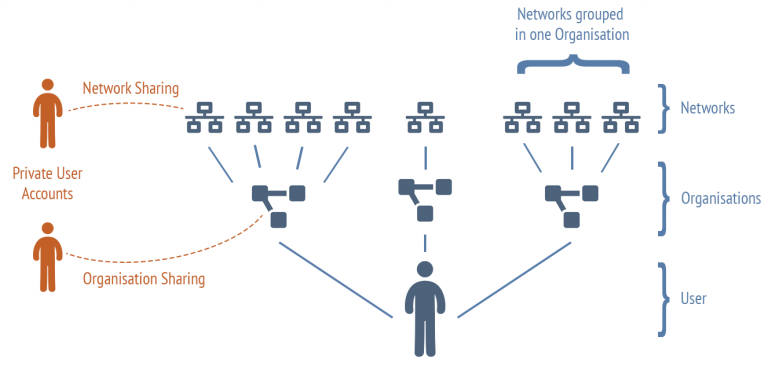Plasma Cloud heard your call! After many years of endless password setups and useless complications, we have decided to implement a novel approach for organising and sharing networks: Multi-tenant is now available on your trusted Plasma Cloud console!
What does multi-tenant mean?
Multi-tenant refers to the new users management system that now allows the registration of private user accounts. Both you and your clients can now have your own personal accounts with which organisations and networks can be created, managed and shared.

As you likely already know, each real world deployment of Plasma Cloud devices is mapped into a network in our cloud. One or more of these networks are now grouped in an organisation, thus helping you to create a tree structure that allows an easier retrieval and management of related networks. You, with your private user account, can be the owner of several of these organisation-networks structures.
As an owner you can select organisations and networks to share with other users. Sharing a whole organisation means that all networks and resources belonging to that organisation will be shared, whereas sharing a single network will only give access to its available resources. The sharing can happen on different levels, allowing selected users to either view, modify or delete resources. More fine-grained permissions could be added in the future, so always keep an eye on our news section and social media channels.
Which resources are shared through organisations and networks?
Some resources are organisation specific (e.g., devices and splashpages) and can be re-used across various networks. Devices can easily be moved from one network to another, while splashpages can be referenced from various networks. Users who have access to networks only cannot access these resources, but they are still allowed to retrieve network specific resources (e.g., SSIDs).
What are the practical implications? A brief use case.
After going through all these details, let’s get to the practical implications of this novel approach. Let’s imagine, for instance, that the system integrator “Company A” sets up an organisation for a specific customer (e.g., an hotel chain) and that each physical location gets its own network connected to this organisation. The hotel employees monitoring and maintaining the network could be granted specific access to the hotel chain organisation. Whenever one of these employees no longer works on that specific task or project or has left the company, the organisation and network access can be withdrawn from their private account without affecting any other users of the system, as there is no more password sharing.
